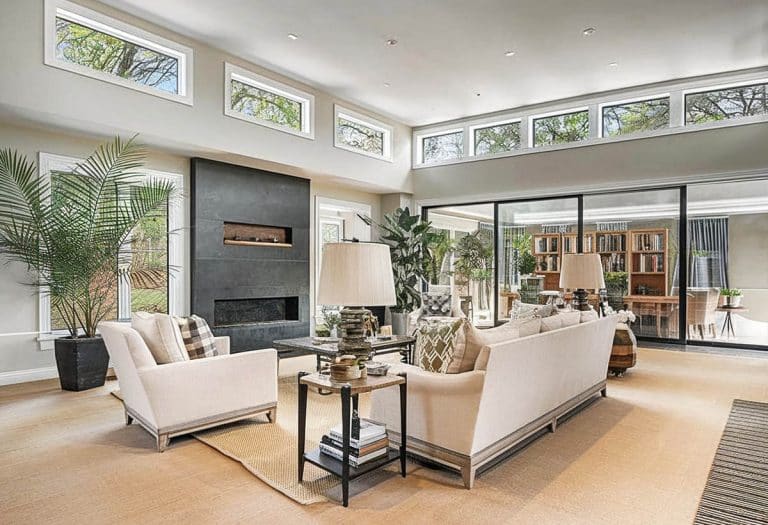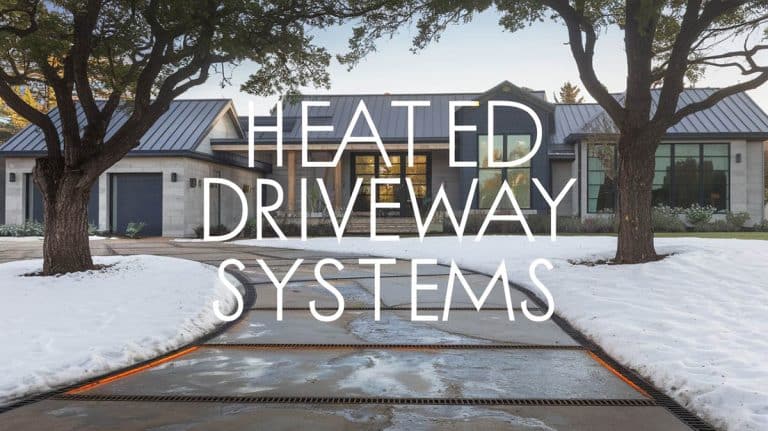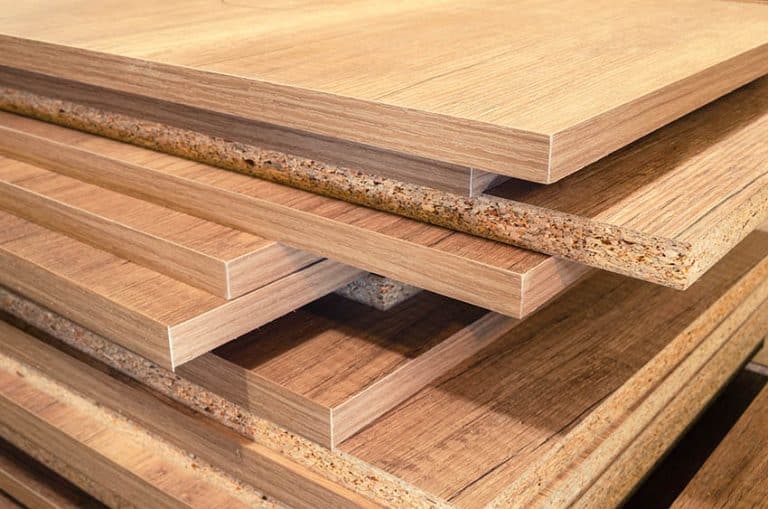Types Of Fireplace Dampers
Here’s the different types of fireplace dampers including what a damper is, how to use one, and to tell if it’s open or closed, designs, parts, and replacement tips.

An in-depth understanding of what its function is, how to use it, and whether it is working properly is absolutely essential for you to fully maximize its benefits.
Knowing how to properly use it and detect possible problems you may have with it are important in its maintenance as well as in its efficiency. This is also bound to lengthen the life span of your fireplace in the long run.
What Is A Fireplace Damper?

Its role is particularly important during the summer season or whenever it’s hot outdoors. During the hot days, the atmospheric changes from the outside will clash with the cool and conditioned air from the inside of the house.
This leads to hot outdoor air entering your home space and affecting the efficiency of your air conditioning system. A chimney damper stops the warm air from entering the home and this makes your energy consumption far more efficient at the end of the day.
How To Use A Fireplace Damper
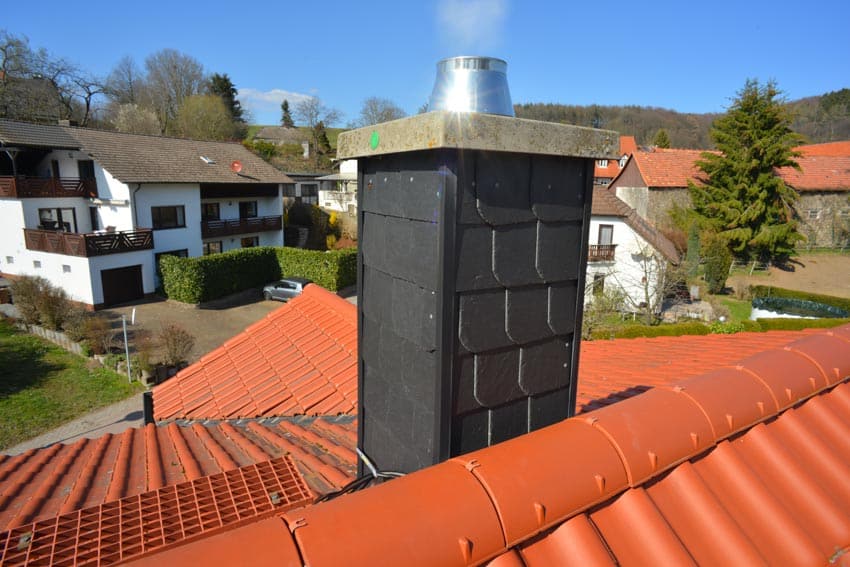
Basically, a fireplace damper is there to regulate the heat retention rate as well as the burn rate of the fireplace in your home. When you allow some air to enter your chimney, this will feed the fire and more than that, regulating it will allow you to let that same fire burn safely while you enjoy its warmth.
In order for you to use a fireplace damper, you need to figure out where the control knob is. This will allow you to open the airway while you’re in the process of getting your fire started.
Once the fire starts to burn, you can work on closing your damper partially. This will keep the warm air inside the chimney while at the same time allowing the smoke to vent out of the house.
A chimney damper is extremely useful for getting your fire started as well as for properly maintaining or feeding it while it starts to burn. Whenever your fireplace is not in use, make sure that you always remember to keep your damper closed.
This will help maintain the warmth inside a residence and the major types of rooms in a house so that none of that warm air manages to escape through the chimney. Remember the basic laws of physics. Warm air rises. And if your damper is open, it can definitely escape out of the house.
These are the basics of how to operate a regular chimney damper.
Some dampers are fancier and might have additional functions and for those upgraded ones, you might want to read the manuals that they come along with in order for you to make the most use of their functionalities.
How To Tell If A Fireplace Damper Is Open Or Closed
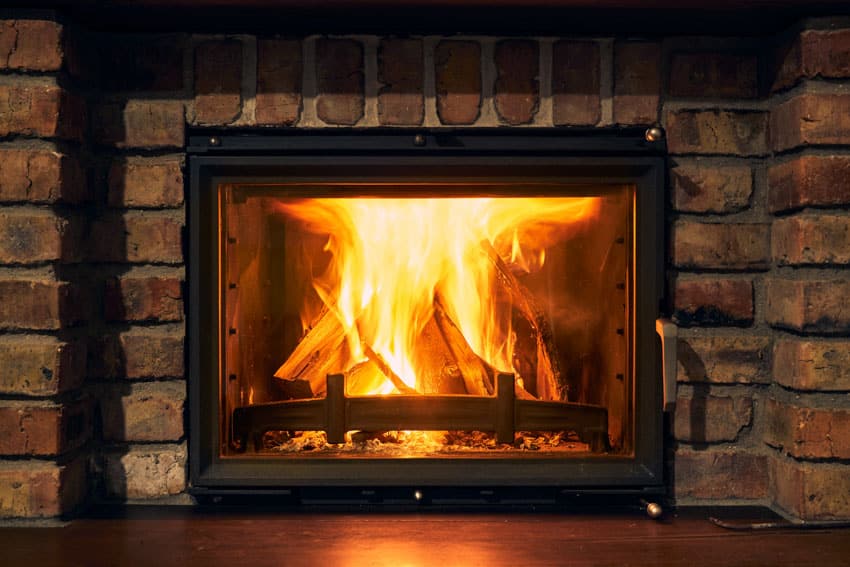
Why? For starters, you need to understand that open types of fireplace dampers will actually allow smoke coming from the fire as well as fumes and other byproducts of combustion coming out of that first time you actually get a fire ablaze to escape from your home.
The whole purpose of the chimney is so that all these harmful byproducts get channeled outside of the house safely and in a fuss-free manner. An open damper is also great for inviting outside air to help keep your fire inside the chimney alive.
If you got your fire burning and your damper happens to be closed, this can cause some serious trouble inside your home.
Not only will you have a hard time getting your fire going because there isn’t any extra oxygen from outside to help fuel it, but your home will also start to get filled with the toxic byproducts out of starting a fire such as carbon monoxide, smoke, and other things that you definitely wouldn’t want to inhale. A closed damper will block out the smoke’s only escape route.
Start off by investigating your actual damper. The traditional ones are called throat dampers and they’re positioned at the base of the chimney.
It’s easily reachable but it’s also hidden for aesthetic purposes. They need to be operated manually as well. There’s usually a chain, a switch, and a handle or some sort of screw that’s rotary style.
Proceed with a visual inspection. Check what position the damper is in to tell whether it’s open or close. If it happens to be too dark to see, you can always peer in with the use of a flashlight.
If you can look up and see the actual opening to the outside, then it’s open. If you can’t see any opening and there’s a metal plate blocking your line of sight, then it’s closed.
If a visual inspection does not suffice and you’re still rather unsure if your damper is open or closed, another trick is to check for a draft.
Stick your hand into the opening of the fireplace and check if you feel any type of breeze brushing against your hand. If the damper is open, you’re bound to feel some sort of draft. If it’s closed, you won’t feel a thing.
You might also want to check the controls. If you’re fairly familiar with how your damper controls work, you can quickly check out the position of the damper without ever having to poke your head up into the chimney opening.
Usually, handles that are turned away from you would mean that the damper is open. If the handles are pulled in towards you, the damper is closed.
For other fireplaces, it may be a matter of checking if the levers are turned left or right. Left means that the damper is closed while right means that it’s open.
Another possibility is that your fireplace damper might be top mounted and that it might be controlled by some sort of chain. It can usually be found on the inside of your fireplace. Check its position.
Usually, if it’s hooked to the side of the fireplace wall, this would mean that your damper is closed. If the chain is dangling and is unsecured, this would mean that the fireplace damper is wide open.
You can also tell whether a fireplace damper is open or closed just by listening to it. The noises outside of the home become so much more amplified when the damper is wide open.
You’ll oftentimes hear the air whooshing, hear cars or traffic noises from the outside, or just hear random echoes coming from the chimney itself.
Different Types Of Fireplace Dampers

These two types are throat dampers and top sealing dampers. The main difference between these two is where they are located.
Technically speaking, both of these chimney damper types can definitely help with the efficiency of the fireplace. However, each type has its own unique offerings and benefits.
Chimney Throat Damper
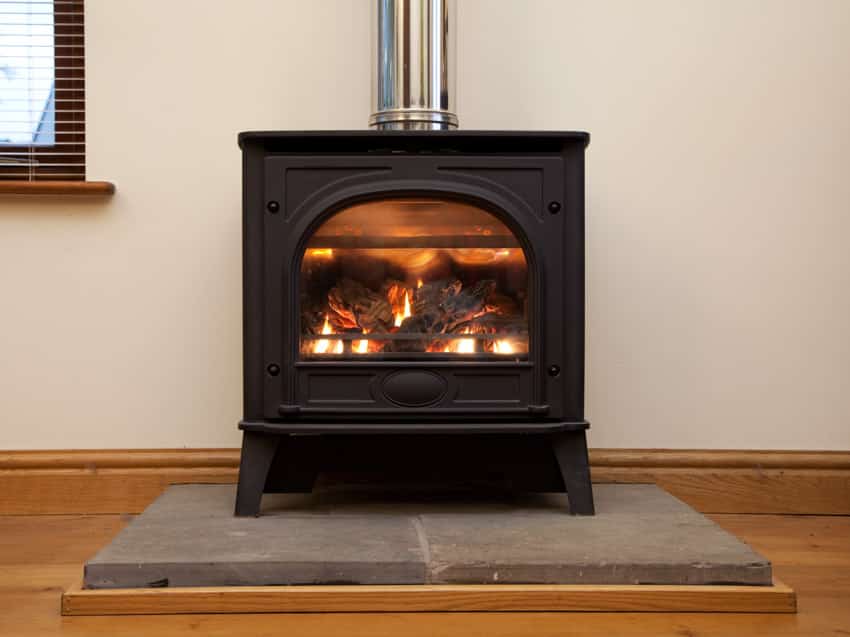
The material is commonly made out of cast iron, steel, or stainless steel. A chimney throat damper oftentimes looks a bit like a trap door. It is equipped with a flat that tends to close over a track. This track is usually controlled by either a knot or a poker.
When a chimney throat damper closes, it forms some sort of seal that’s metal to metal. One significant downside to this damper type is that it can be more prone to water and rust damage. It is because of this that a chimney throat damper’s efficiency can end up decreasing over time.
This is because of the fact that this is a time of chimney damper that’s positioned very closely to the fireplace’s heat. This can cause the damper to warp, eventually losing the barrier that it so critically needs to function correctly.
Top Sealing Damper
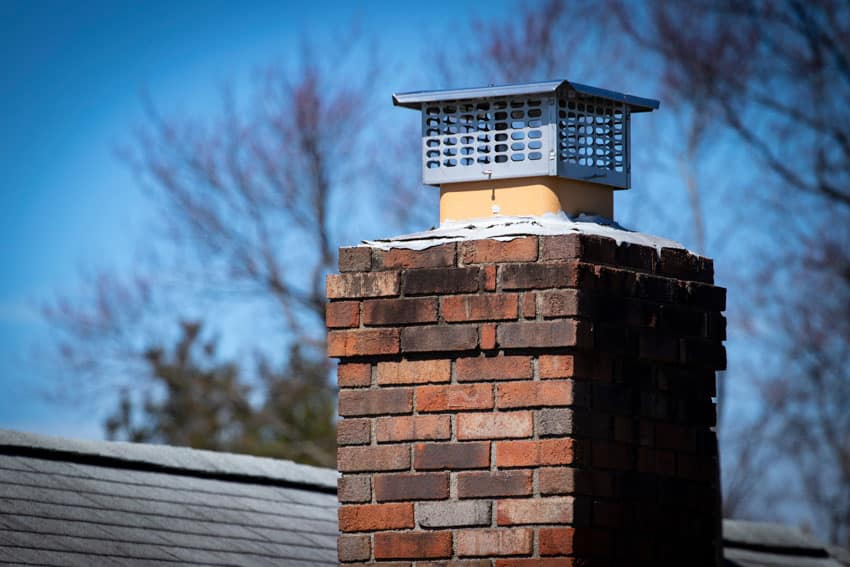
When it happens to be open, a top sealing damper can actually be capable of creating a much tighter seal compared to what a throat damper has to offer.
A top sealing damper has the ability to provide a much tighter seal because of a really critical component: its gasket. A stainless steel cable is connected to the seal. This said steel cable goes all the way down to the chimney flue and well into the actual firebox.
This makes it easy to close or open it. Because of this extra feature that’s quite essential, top sealing dampers are way more energy efficient because it’s better at keeping moisture out of the chimney space.
Fireplace Damper Parts
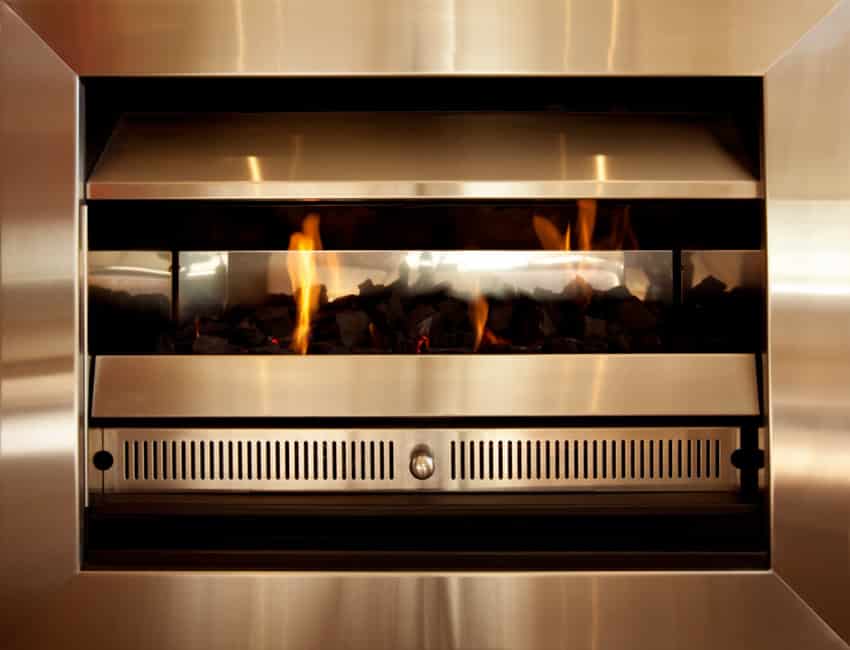
A damper plate can be located at the base of a chimney or right at the top. It’s usually square-shaped and spring-loaded, with a chain and handle controlling its movements.
Fireplace damper handle: This is also known as a knob. It’s a piece of metal that is used to control the actual damper, getting it to either open or close.
Traditional throat dampers have knobs with latches that allow you to leave the damper partially open. They might also have a screw handle system that can open or close depending on which way it’s turned.
The handle of a top mounted damper is at the end of the chain that hangs down from the top of the chimney and it can be hooked to the side of the fireplace wall when it’s closed or not in use.
Fireplace damper clamp: Damper clamps are also known as damper locks or clicks or stoppers. This part clamps to the fireplace damper and makes sure that it stays in a completely open position all the time and can’t fully close.
This is used for a gas fireplace where the position needs to be open all the time in the event of a gas leak. This will prevent toxic carbon monoxide from filling into the home.
Fireplace Damper Replacement
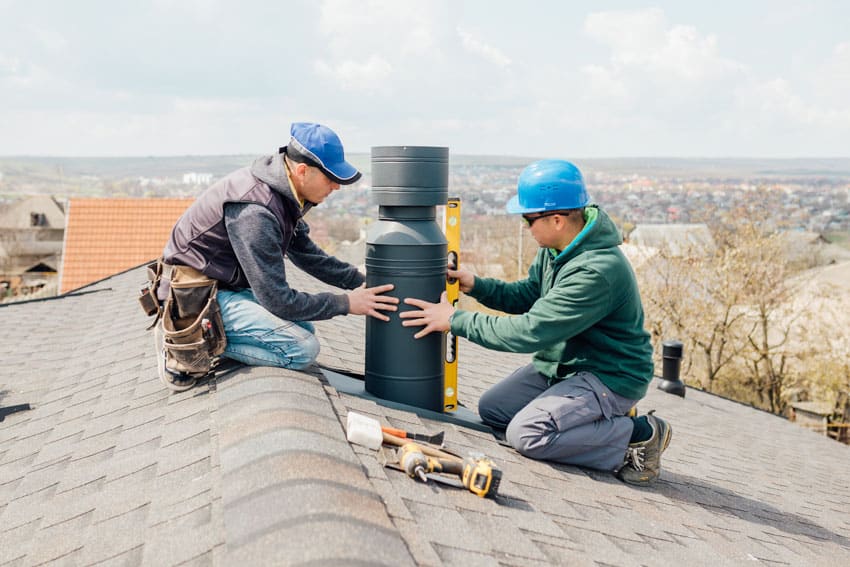
To start off, make sure that you remove all debris and creosote from the chimney. Clean it off and get it removed.
Debris can end up blocking hinges within the fireplace that might prevent the damper from opening and closing properly in the first place. This is one of the most common issues why a damper may have issues with being properly opened or closed.
The next step is to remove the damper plate. Look upwards from your firebox to see some sort of rod affixed to your chimney with a nut.
Loosen the nut out to get the rod removed. Your damper plate will either come down right in that instant or you might need to twist the road in order for the plate to come down eventually.
It all depends on which among the types of fireplace dampers you’re using. Inspect the state that your plate is in. If it’s warped or cracked, you might need to replace that part.
Clean everything out. From the frame where your damper plate is resting, to the actual damper plate itself, to the rod that you just removed. You also need to make it a point to check for any signs of corrosion while you’re at it.
Most of the problems with the different types of fireplace dampers will be because of rust and debris. If you purchase a replacement damper plate, you would still need to clean out the firebox and the frame before you reinstall.
Replace your damper plate. Once you’ve checked everything out and made sure that there won’t be any further problems and that everything has thoroughly been cleaned out, then you can proceed with replacing the actual damper plate.
Make sure that you put the rod and its nut on tight and well-aligned. It helps if you check and see if it opens and closes properly, too.
When it comes to repairs, the costs can really vary greatly depending on what the actual problem is with a chimney damper. There are so many basic components in a chimney and it can go from the bricks to the crown, to the chamber, to the quality of smoke that billows out, and so much more.
In order to isolate what the repair costs can be for a damper plate, the approximation is at an average of $55 to $70 or more per year.
If you damage other parts of the chimney while you’re initiating damper repairs, this can open up more costs as well so you need to keep that in mind before you try to do things yourself.
It is always better to hire a professional for your chimney damper repairs and replacements.
Professional fees range from $300 up to $500 or so but they come with warranties, fuss-free service, and ultimately you just sleep better at night knowing that everything is alright and taken care of with the best possible kind of care and technical support.
See more related content in our article about gas vs electric fireplace on this page.

